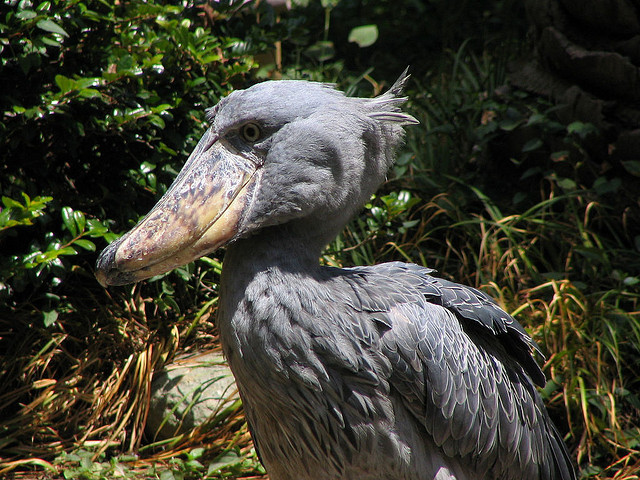
The shoebill is noted for its slow movements. Photo by pelican
5 images of the Grey Shoebill of the central tropical Africa
1- The shoebill is distributed in freshwater swamps of central tropical Africa, from southern Sudan through parts of eastern Congo, Rwanda, Uganda, western Tanzania and northern Zambia.

2- The Shoebill is a large stork-like bird and it derives its name from its massive shoe-shaped bill. They feed on fish, frogs, reptiles, and small mammals. Between 5,000 and 8,000 individuals exist, the majority in the swamps of the tropical forests of Sudan.

3- The grey shoebill is noted for its slow movements and tendency to remain still for long periods, resulting in repeated descriptions of the species as “statue-like”. They are quite sensitive to human disturbance and may abandon their nests if flushed by humans. However, while foraging, if dense vegetation stands between it and humans, this wader can be fairly tame.

4- The shoebill is normally silent, but they perform bill-clattering displays at the nest. When engaging in these displays, adult birds have also been noted to utter a cow-like moo as well as high-pitched whines. Both nestlings and adults engage in bill-clattering during the nesting season as a means of communication. When young are begging for food, they call out with a sound uncannily like human hiccups.

5- Birdlife International has classified it as Vulnerable with the main threats being habitat destruction, disturbance and hunting. This species is considered to be one of the five most desirable birds in Africa by ornithologists.
